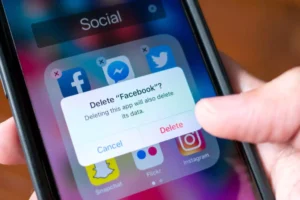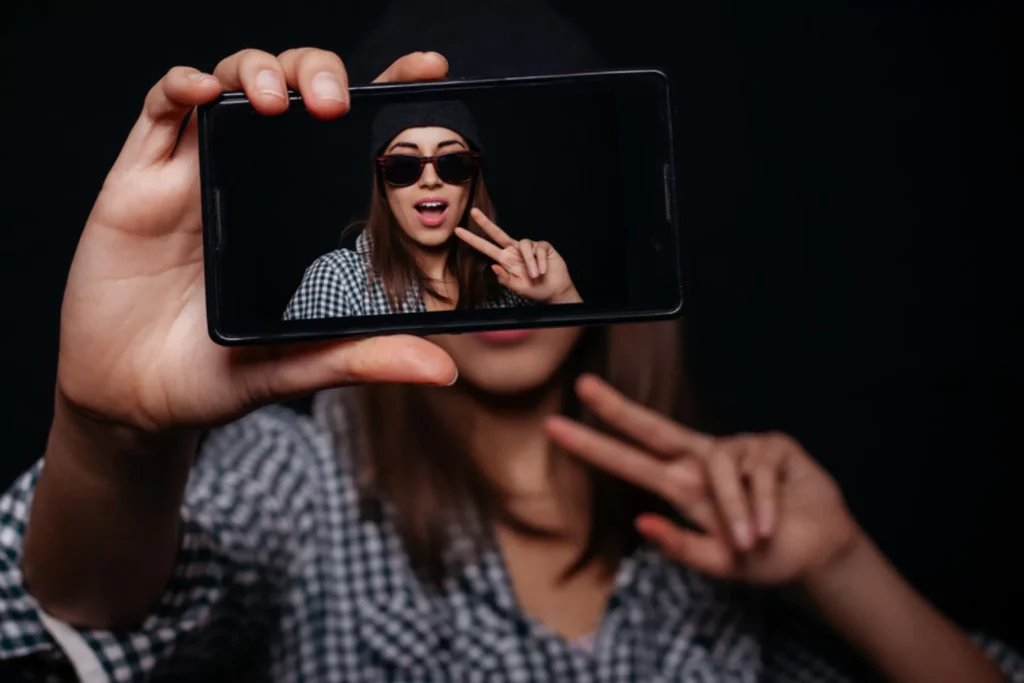
I Quit Social Media for a Week … and My Marriage Thrived
Have social media become a time waster that is interfering with your relationship with your spouse? Consider disconnecting.

Unless you’ve been living under a rock the past few months, you already know that Congress voted in favor of a TikTok ban. Essentially, TikTok’s Chinese parent company, ByteDance, has 270 days to sell the app or have it prohibited on American app stores.
TikTok Alternatives You Should Know About
Estimated reading time: 8 minutes
President Biden signed this bill at the end of April. And now, ByteDance and hundreds of TikTok influencers are opposing it. So, how does this potential ban affect families?
Your kids might be getting all riled up. Some are outraged that the United States government may “take away” their favorite app. (If they’ve already downloaded it, the app will likely stay there). Pew Research estimates that about six-in-10 teenagers use TikTok, with 58% of those users engaged with it daily. The New York Times speculated that a third of TikTok’s users may actually be 14 years old or under (users must be 13 to use the app).
On the other hand, they might simply be looking for an alternative.
You’ve probably already heard of Instagram Reels and YouTube Shorts. Parent companies Meta and Google launched those options just a couple of years after TikTok’s popularity boomed in the U.S. But as the ban looms, more and more options seem to pop up. These apps may not generate the same controversy as TikTok. However, parents should still evaluate whether these short-form video platforms are safe for their kids.
So here’s a list of the top TikTok alternatives you should know about:
YouTube Shorts isn’t a separate app or platform from YouTube (which 93% of teens already use). So anyone with a YouTube account can access the short-form, phone-friendly videos directly from the YouTube app. Parents should note that YouTube accounts aren’t required to watch YouTube shorts. And setting up parental controls is all but impossible since Google throttles that capability after kids turn 13.
If your child is 12 or under, consider setting up a YouTube Kids account (a separate app. This app caters to children with extensive parental control features) or creating a “supervised account.” This is a good way to monitor the videos they’re watching on YouTube Shorts. (Plugged In’s “Parental Controls: YouTube” tells you how.)
Be aware that even with a supervised account, YouTube Shorts can still show harmful content, including nudity, profanity, violence, conspiracy theories and misinformation. One study found that YouTube Shorts “’bombard[s] boys and men with misogynistic and male supremacist content within minutes of signing up,’ regardless of whether they seek the content or not.” And tech watchdog Bark warns that even with content safe for younger audiences, predators can lurk in the comments section.
Pew Research estimates that about six-in-10 teenagers use Instagram. Like YouTube Shorts, Reels isn’t a separate app or platform—it’s accessible to anyone with an Instagram account. And like TikTok, it has its own powerful algorithm that suggests videos and keeps users scrolling.
Parents should note that the FBI issued a warning about “sextortion,” wherein “adults pose as teenagers online in an attempt to entice victims into engaging in explicit activity” to be used later for extortion. And Instagram remains a primary hunting ground for these predators. In response, Meta began testing new safety features on Instagram and Facebook to protect teens. But Plugged In cautions that these features “only serve to warn teenagers [of the dangers], not stop them.”
Snapchat predates TikTok by a good five years, and it’s long been favored by teens (60% use the app) for its automatic message/picture/video erasing feature. But that right there is a reason for parents to exercise caution. According to Bark, because the app erases content after 24 hours, teens have used it to send explicit pictures (which can easily be screenshot and then posted without the sender’s consent). But the disappearing feature has also allowed drug sales, bullying exchanges, excessive profanity, and even videos of self-harm to go unchecked.
To say nothing of the potentially harmful content posted to Snapchat’s “Spotlight” (the app’s TikTok-esque video section that lands it on this list), there’s also “Snap Map” and “Our Story,” both location-based features that could alert predators to a teenager’s whereabouts at any given time.
Like TikTok, Lemon8 was created by ByteDance. So if you’re concerned about privacy on TikTok, then certainly don’t indulge in Lemon8.
But wait, there’s more.
Lemon8 has zero parental controls. It doesn’t allow users to make their accounts private—so “whatever you post will be public no matter what,” says Bark. And it also allows users to link their other social media accounts and even their phone numbers. This could allow potential predators to communicate with your child outside the Lemon8 app and send them potentially harmful content.
So while the app doesn’t have the notoriety of TikTok, it certainly isn’t much safer.
According to Bark, “Likee is a TikTok clone that makes TikTok look downright wholesome—which is saying a lot.” Bark goes on to list a number of concerns about the app, including a vast amount of sexually charged and suggestive content (even with parental controls turned on), numerous fake accounts (which “opens the door to predators impersonating children and targeting young people on the app”), a ridiculous number of bots (which could lead to financial scams) and the inability to make profiles private.
So this is what I’ll say about Likee: we don’t likee.
Triller has already attracted the attention of celebrities such as Justin Bieber, Tyga, Josh Richards, Charli D’amelio and Noah Beck, according to Digital Trends. However, the app is still relatively new and unknown, meaning that its safety is still relatively untested.
Common Sense Media has already flagged the app for potentially inappropriate content, noting that creators can share videos containing violent imagery, suggestive sexual content, foul language or even substance abuse. Like other social media platforms, users can comment on and like videos, follow each other, send private messages and reveal their location when uploading videos, all of which pose privacy concerns for parents.
But one thing that makes Triller a bit different from some of the other apps on this list is the ability for teens to “support” their favorite (verified) creators by purchasing in-app currency using real-world cash. And that may cause additional hesitation for some parents.
Much like YouTube Kids, Coverstar is targeted toward a Gen Alpha audience (those 12 and under) but it also appeals to teenagers. The app has been touted as a “safe TikTok alternative,” and in addition to promoting positive social media engagement (meaning a prioritization of connecting with friends and encouraging creativity), it certainly seems to take children’s safety seriously.
The app doesn’t allow bullying or toxic content—and it’s closely monitored to ensure this is enforced. Coverstar further protects kids using the app with its video posting terms, which prohibit videos showing any explicit or suggestive content, including videos of people in underwear or swimsuits. Comments are permitted, but the app has no private messaging function, deterring would-be predators. And there are even privacy measures in place to prevent non-students from joining school groups.
However, in spite of Coverstar’s “positive” social media experience, the app still largely promotes the idea of getting “famous.” And kids might feel pressured to feed the social media beast in ways that are detrimental to their mental health.
Zigazoo began as an app for Gen Alpha, though it’s been expanded to appeal to teenagers as well. It has some very positive features, and it’s also the only app on this list that’s KidSAFE COPPA Certified.
With Zigazoo, concerned parents had a direct say in the type of content posted and parental controls offered. According to Bark, every video posted to Zigazoo is reviewed and moderated by a human—which is an upgrade from YouTube Kids (which only reviews videos that are flagged by users). And while the videos posted to Zigazoo may resemble the sort of trends found on TikTok, Bark alleges that “parents can be confident that content on Zigazoo is nowhere near as risky.”
Zigazoo also limits the comment and chat features. So kids and teens can send stickers or emojis, but the ability to troll a video with negative comments or send inappropriate messages is greatly curtailed. Video consent from parents is required to create an account (and thus prevent bots and deter predators). And Zigazoo also encourages users to engage with content in a positive manner, rewarding them when they do with in-app perks.
If you were to ask me which of these apps is safest for kids to use, I’d definitely say Zigazoo, although Coverstar and YouTube Kids (not YouTube Shorts) are also relatively safe bets. However, every social media platform has its pros and cons. And a lot of that comes down to how your kids and teens are using those apps. Instagram Reels could be a perfectly fine option for one teen but a complete disaster for the next. But the best way to evaluate which apps are right for your family is to talk to your kids. Start having conversations with them about social media when they’re young. And continue those crucial discussions as they get older and are given more autonomy over their social media choices.
And when it comes down to it, pray with your kids about their decisions. Teach them discernment so they can learn to make healthy media and entertainment decisions on their own, and ask the Holy Spirit to guide them as they grow older and enter the world of adulthood, where parental controls can’t help them.